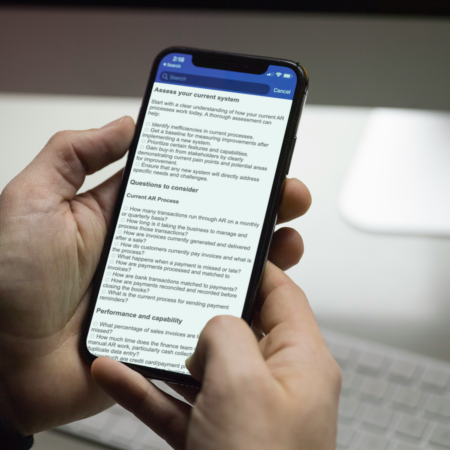
Accrued expenses are expenses that your company has taken on but has not yet paid. Accrued expenses are also called accrued liabilities because they become a debt you owe, based on receiving a product, service, or operational expense. The accrual method of accounting is often contrasted with cash-basis accounting.
Companies make an initial choice on how to account for income and expenses. With the cash basis of accounting, all transactions are recorded when money changes hands. With an accrual basis, transactions are recorded when the work is done or the cost is acquired.
In other words, with accrual-basis accounting, the recording point is when the money is earned, not when money changes hands. Using the cash-basis method is easier but doesn’t provide the same financial insights that the accrual method does.
Newsletter sign up
"*" indicates required fields
What are Accrued Expenses?
Accrued expenses are expenses that are incurred but still pending payment. With an accrued expense, we make a journal entry along with an offsetting liability. A business should use accrued expenses to produce more accurate financial reports and get a better idea of the financial health of the company.
Without noting accrued expenses, a business can seem more profitable than it is during the time period under review. This doesn’t create an accurate depiction of the company’s health, because it doesn’t account for the liabilities that are owed.
Using accrued expenses acknowledges that the liability is valid and records it as such. That way, the ledger accounts for all income and expenses created during that time period.
Why Accrued Expenses are Important
An accrued expense journal entry documents in the company’s books that money will be spent for goods or services already obtained. For an accrual example, you may spend $300 on office supplies in October but not get the bill until November. Noting accrued expenses helps the company paint a real-time financial picture. It accounts for what we’ll pay for things already agreed to via invoices not yet received or pending payment.
When it comes to monthly cash flow, a business should know how much money it needs to pay vendors for incurred expenses. Otherwise, the company could over-extend itself, because it doesn’t know it has committed more money than it has available. This can be financially devastating, affecting the company’s ability to continue operations in a profitable way.
Accrued Expenses Example
A simple example illustrates why accrual accounting creates the most accurate financial picture. Let’s say a company has $3,000 in revenues in March. It incurred $1,200 in expenses in the same month, but hasn’t yet paid that amount. If the company only looks at the $3,000, it will have an inflated sense of profit for the month. With the accrual method, the profit will be $1,800 because we subtract the accrued expense from the revenues.
How Accrued Expenses Work
Two things happen when we note an accrued expense. First, when the expense is incurred, we create a journal entry for it — and create a debit based on accounts payable. Then, we add the expense to liabilities in the balance sheet.
When using accounting software, the software automatically creates the offsetting liability entry when the ledger expense is added. This makes it easy to keep the balance sheet updated with liabilities.
Accrued expenses are generally short-term expenses that will be paid within a month of when they are incurred. If we expect to pay them within a year, we’ll note them on the balance sheet as current liabilities. Meanwhile, we’ll note anything over a year as a long-term liability.
Types of Accrued Expenses
Accrued expenses come in several different forms. A business could deem supplies or services as accrued costs. Additionally, utilities or unreimbursed employee travel are other accrued expenses examples. Also, we may note accrued taxes or accrued compensation in the general ledger.
Remember, any expense incurred that isn’t paid immediately is an accrued expense. Your business may see any number of accrued expenses in a given month, including:
- Taxes on all earned revenue
- Unpaid interest on loans
- Salaries, bonuses, and wages
- Unused vacation or sick days
- Future warranty payments to customers
- Returns or repairs
- Utilities for the month incurred
- Supplies on a net 30 billing cycle
- Services yet to be invoiced
Accrual vs. Cash Basis Accounting
Accrual accounting notes when income and expenses happen, while cash-basis accounting notes income and expenses as they’re paid. In other words, accrual acknowledges when goods and services are exchanged, while the cash basis notes when cash changes hands.
The accrual method of accounting is considered a more laborious form of accounting because it involves a dual entry. With an accrual basis, you must reconcile the entry when the account is paid. However, accrual-basis accounting is considered a more accurate form of business accounting, telling a more complete picture of financial health.
Accrued Expenses vs. Prepaid Expenses
Accrued expenses and prepaid expenses are opposites. Accrued expenses haven’t yet been paid, they’re considered an added liability on the balance sheet. By contrast, prepaid expenses are paid and are considered as assets on the balance sheet. With prepaid expenses, the actual goods or services will come later.
Accrual Accounting Example
Let’s take a look at how an accrual journal entry works. For example, let’s assume a company hires an IT consultant to upgrade its servers at the end of April. While the invoice hasn’t yet been submitted, the cost for the work will be $1,500. Because the company hasn’t paid this yet, it will be noted as an accrued expense.
The bookkeeper creates a debit of $1,500 to the IT account in the General Ledger. If we use accounting software to record the transaction, an automated rule will add a credit of $1,500 to the accrued expenses liability account.
When the invoice arrives and is paid, the bookkeeper then enters the software’s Accounts Payable section and credits the General Ledger $1,500. At the same time, the accrued expenses liability account is debited $1,500 because the account is paid in full.
Automating Accrued Expense Journal Entry
There’s good news for business owners who want to use the accrual method of accounting. While it takes more work, accounting software like Accounting Seed makes it easy. As you create the general ledger item, the software simultaneously offsets it in the liabilities. When the payment is made, it automatically removes the amount from liabilities. This makes it easier to keep the most accurate picture of your company’s financial health.
Steps for Accruing Expenses
Accounting Seed makes it easy to accrue expenses. To record an expense, you’ll first go into the General Ledger. Make a journal entry as a debit to the Expense account. This will increase your expenses. As you do this, a credit is applied to Accrued Liabilities. This increases your overall liabilities. When the expense is paid through the Accounts Payable module, you’ll credit the Expense account item. At the same time, this reduces your Accrued Liabilities.
For more info on creating accrued expenses with Accounting Seed, check out our knowledge base.
Other Popular Accounting Expense Reports
Accounting Seed is a robust accounting software tool that supplies a variety of reports to help you manage your business. When it comes to expenses, you may want to run reports that help you better handle the amounts you owe to vendors. Some reports to consider are:
- Payables Aging by Payee
- Time Card Budget vs Actual
- Transaction Detail by GL Account
To learn more about how Accounting Seed can help you manage your business financial life, take a test drive of our platform through the Salesforce AppExchange. We’ll be happy to schedule a demo to show you how our software can help your brand get to the next level.
Frequently Asked Questions (FAQs)
Here are a few common questions about how accrued expenses work with Salesforce and tax reporting.
How do Accrued Expenses Work with Salesforce?
Salesforce uses a percentage-of-completion (POC) method for project management. This lets you see expenses for a project as they happen and integrate that into your general ledger as an accrued expense.
With Accounting Seed, you can leverage financial dashboards and reports to assess expenses, track customer engagements, and make important decisions related to how money is being allocated with ease.
How do Accrued Taxes Work?
Accrued taxes are the amount of taxes assessed to a company that are still pending payment. Taxes may be sales tax, taxes on earned revenues, or property tax. Accrued taxes are notated in the general ledger and listed as a liability for the company on the balance sheet.
Is Accrued Expense an Income?
Accrued expenses are not income. They’re a current liability recorded on the income statement as an expense. The accrued expense is also noted on the balance sheet as a current liability.
How are Accruals Taxed?
When using the accrual method, revenues are taxed as they are earned regardless of whether they’ve been paid yet. This means that the business assumes the tax liability when goods or services are exchanged.
Why do Accountants use Accrual Basis?
Accountants prefer to use the accrual basis of accounting because it gives a more accurate view of what a company’s financial status is. By matching revenues with expenses as they happen, the company can see how it’s performing on a monthly basis.
For more helpful resources about accounting, read on:
- Top 7 Issues Accountants Face
- Accounting Vocabulary Guide: All The Accounting Terminology to Know
- What are International Accounting Standards (IAS)?
- What is an Enterprise Ledger and Why You Need It
- Accounting Cybersecurtiy: How to Keep Financial Data Secure and Safe
- What to Look for in Grant Accounting Software
See Accounting Seed in action
Get a close-up view of how accounting on Salesforce can eliminate the need for costly integrations—and silos of mismatched information—by sharing the same database as your CRM.


